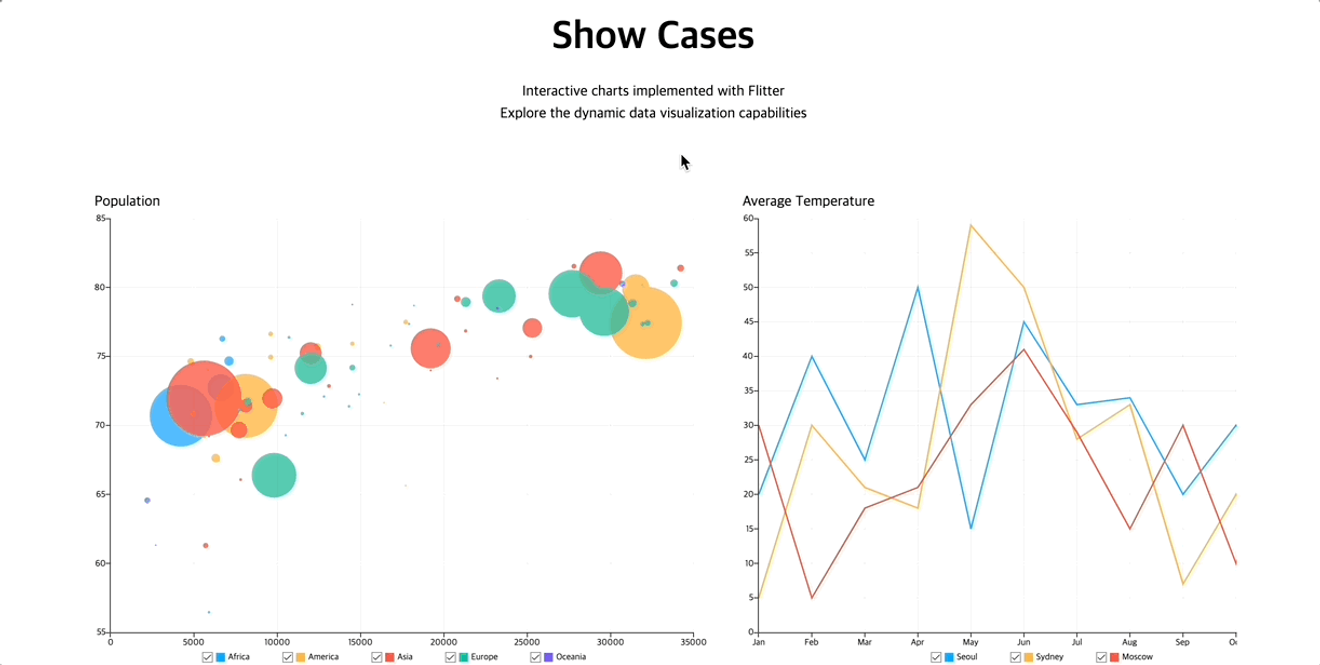Subject
- #A library that handles SVG declaratively
- #A library that calculates the layout of SVG
- #Introduction to a library that helps manipulate SVG
- #A useful library for creating charts and diagrams
Created: 2024-05-01
Created: 2024-05-01 11:44

In the modern web development environment, data visualization has become an essential element. Transforming complex datasets into easily understandable formats is a constant challenge for developers. Flitter was born to address this challenge. Despite the existence of various data visualization libraries, developers often found it difficult to find features that perfectly met their needs among the available options. Even implementing simple charts or diagrams often required a significant learning curve and time commitment.
Flitter's core objective is to empower developers to implement data visualizations like charts and diagrams quickly and easily. To achieve this, Flitter provides two key features.
1. Declarative Code Writing Using Widgets: Flitter adopts a declarative programming model, allowing developers to express their desired visual elements in a simple and intuitive manner. This approach applies the paradigm widely adopted in modern web frameworks like React to data visualization.
2. Advanced Layout Calculation: Accurate layout and positioning calculations are crucial in data visualization. Flitter automates complex layout calculations, such as text width inference, enabling developers to focus on developing more critical logic.
Flitter is particularly ideal for projects with demanding data visualization requirements or situations where quick implementation of simple charts or diagrams is needed. It also offers a syntax and structure that is very familiar to developers with Flutter experience, maximizing synergy between web and mobile platforms.
To use Flitter in React, install the following two packages:
Importing the Widget from flitter-react allows you to easily use Flitter in a React environment.
Detailed documentation and usage examples to get started with Flitter are available on the official documentation site. This site provides a wealth of information, covering everything from basic usage to advanced features.
The Flitter community actively communicates through GitHub and Discord. Developers can suggest features or report bugs directly on GitHub, and the Discord channel is a space to share ideas and experiences related to Flitter. All contributors play a vital role in the growth of the Flitter project.
In the short term, Flitter will focus on bug fixes and performance improvements. In the long term, the goal is to develop enhanced SSR experiences and additional features for better data visualization. Flitter's ultimate vision is to revolutionize data visualization accessibility within the web development ecosystem by providing a comprehensive and scalable solution.
Comments0